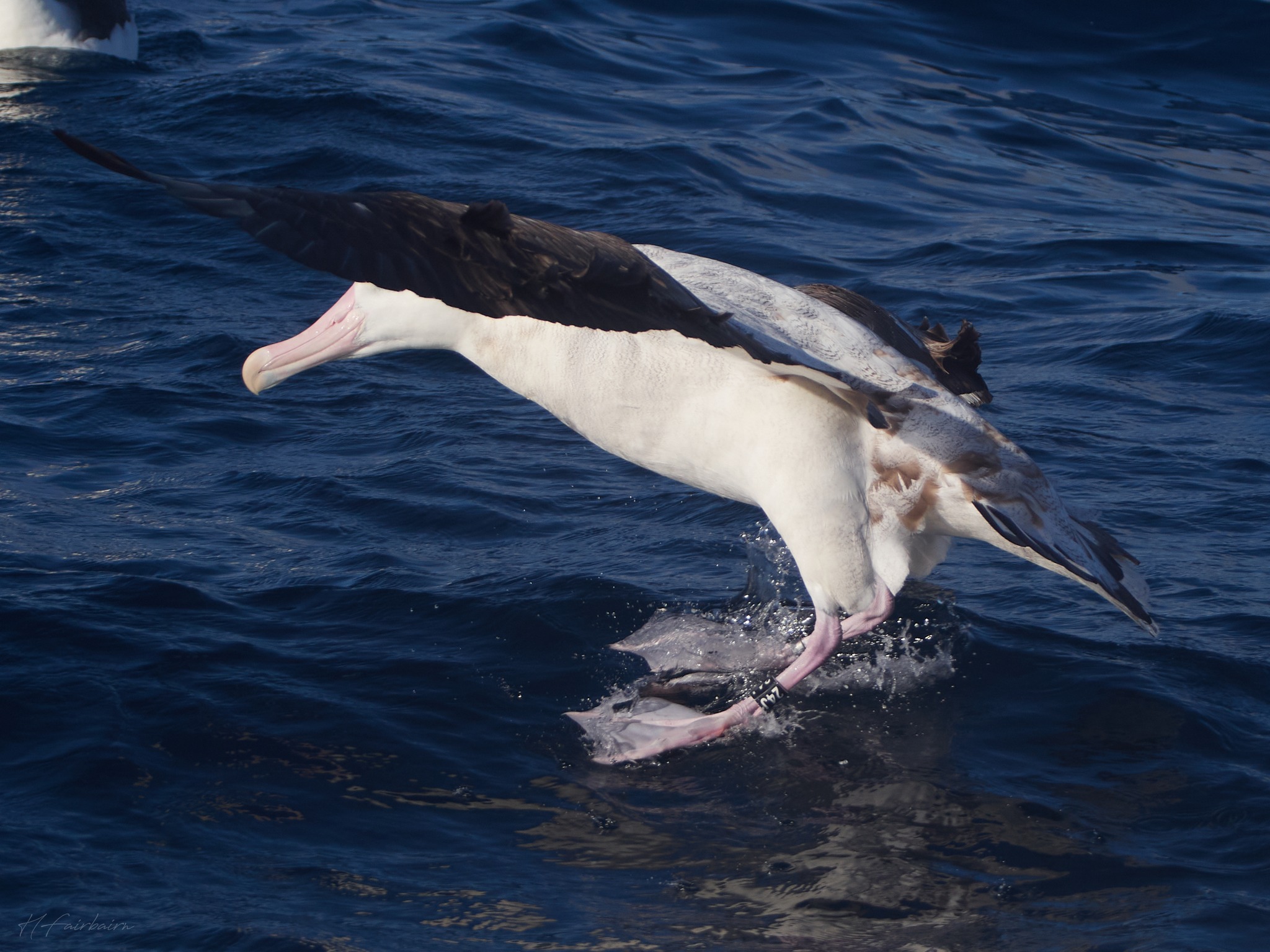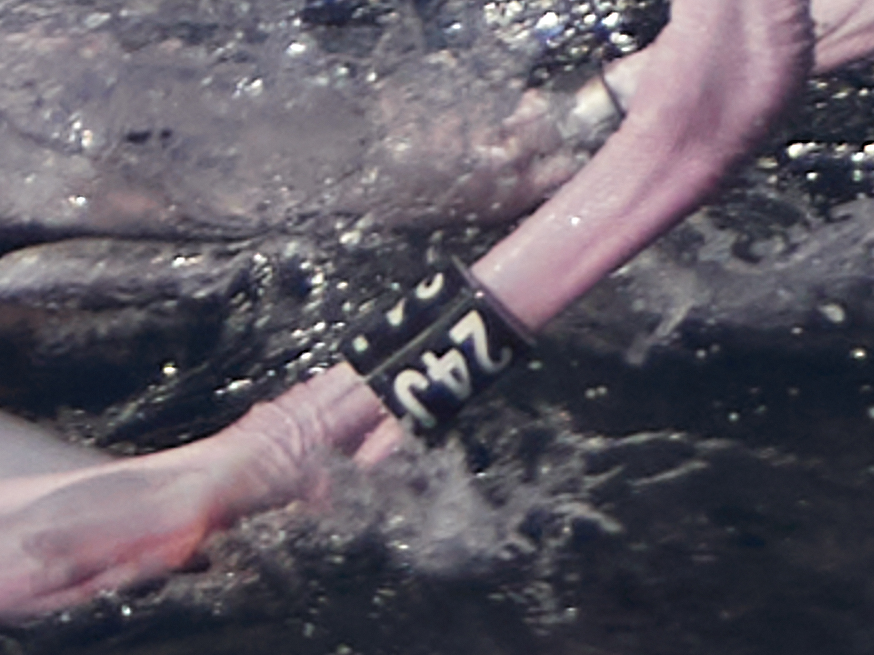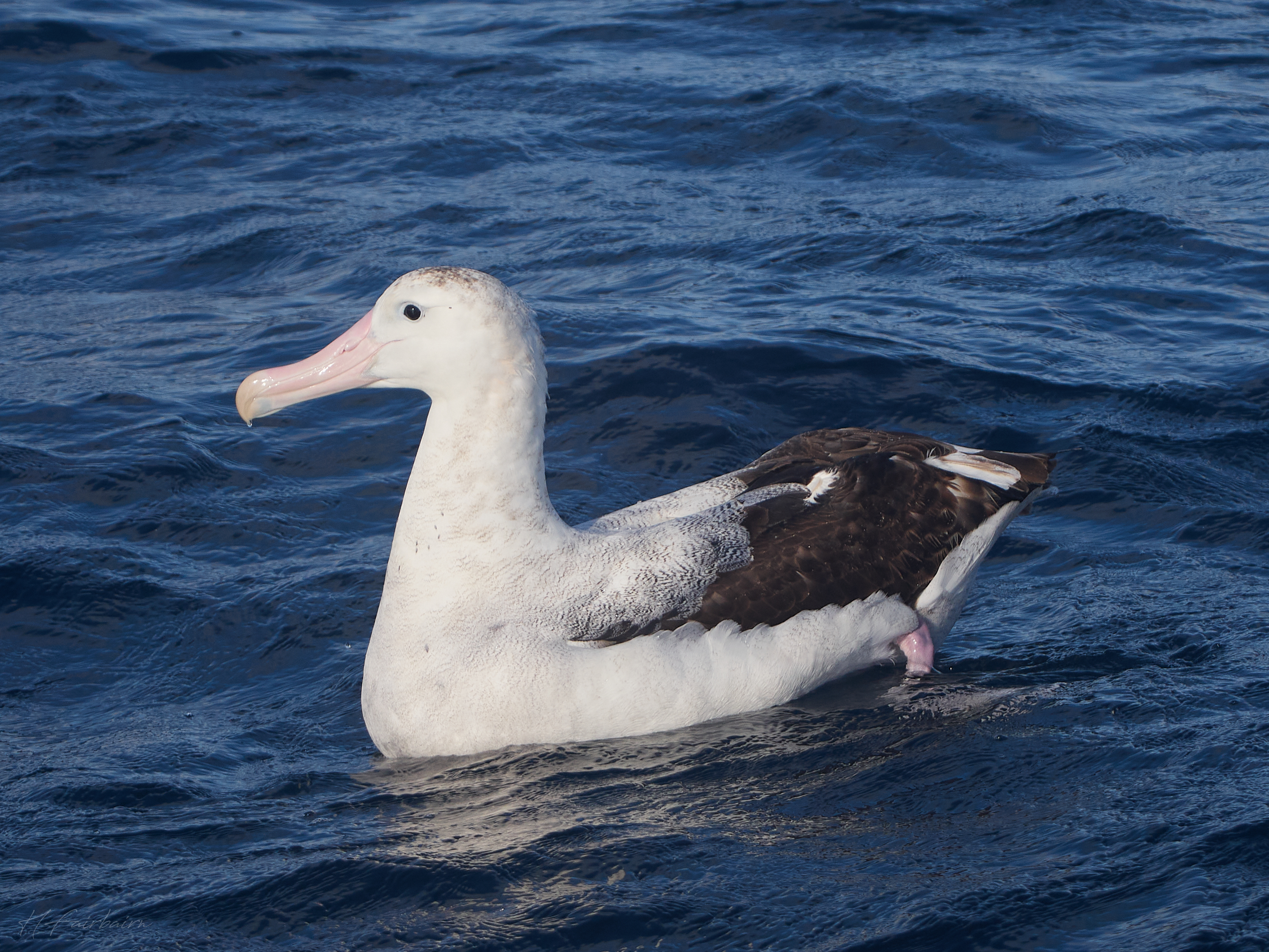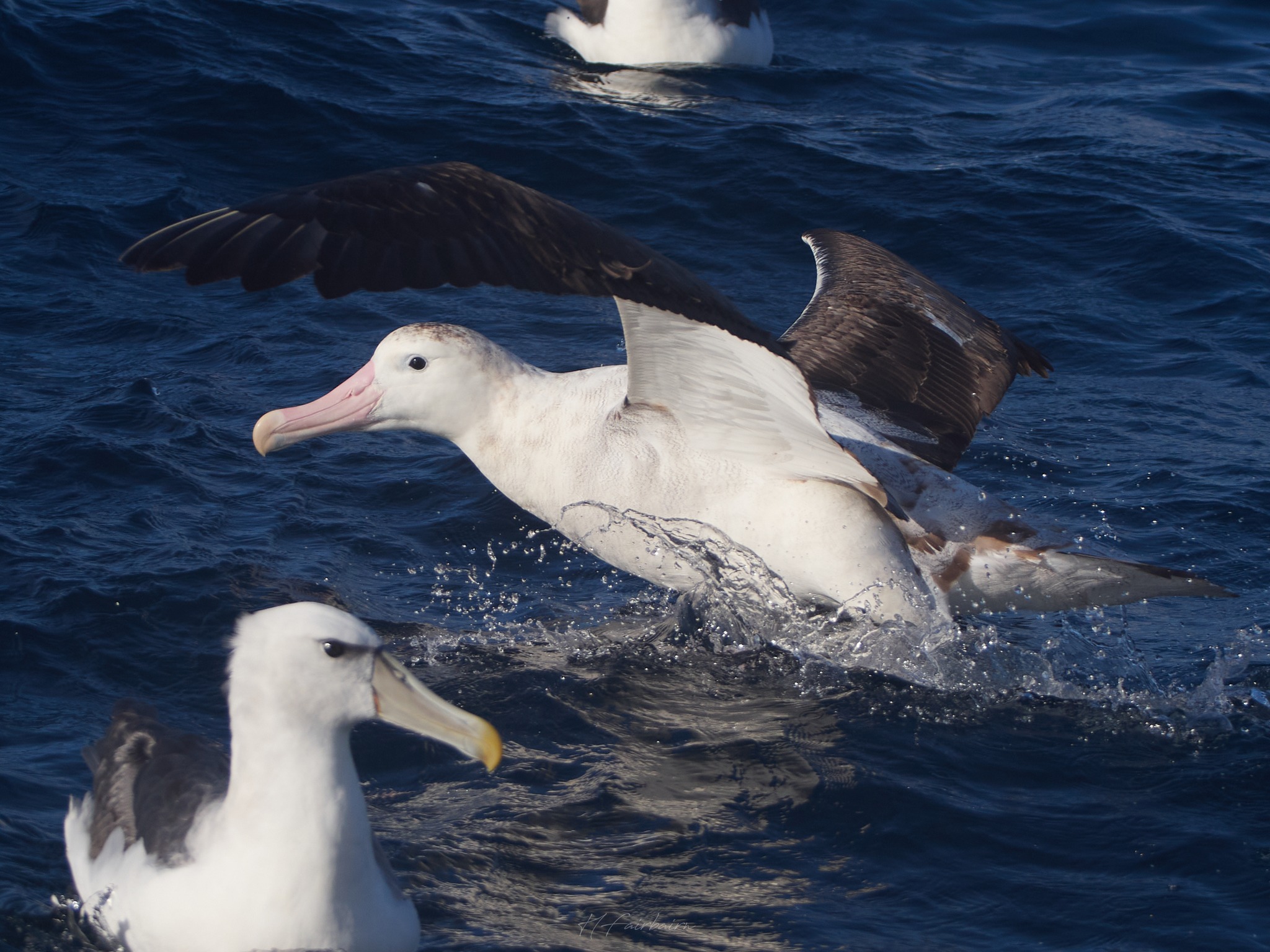 Black 24J off Port MacDonnell, South Australia, 5 May 2024, photograph by Hannah Fairbairn
Black 24J off Port MacDonnell, South Australia, 5 May 2024, photograph by Hannah Fairbairn
On 5 May 2024 Hannah Fairbairn photographed a great albatross Diomedea spp. at sea while seabird watching on a “pelagic trip” aboard the Jaymar Star of Port MacDonnell Fishing Charters operating out of Port MacDonnell, South Australia to the continental shelf break approximately 30 km offshore, as reported on the Port MacDonnell Seabirds and Pelagics - South Australia Facebook Page. The bird carried a metal band on its right leg and plastic colour band black 24J on its left. Read a trip report of the outing here.

Close-up of the Black 24J and metal bands, photograph by Hannah Fairbairn
White lettering on black colour bands is recorded by the New Zealand National Bird Banding Scheme as being used on the Gibson’s subspecies of the Antipodean Albatross D. antipodensis gibsoni on Adams Island in the Auckland Islands group, where Black 24J was banded as a chick on 11 December 2022 by well-known albatross researchers, Graeme Elliott and Kath Walker. The sighting is apparently the first time the bird has been reported since its banding.

Profile view of Black 24J, photograph by Hannah Fairbairn
In response to a query by ACAP Latest News, Kath writes:
“The photo Hannah took of Black-24J at just over two years old is super interesting as we so rarely see birds of that age and haven’t known the timing of the moult of their juvenile brown feathers. It looks like they must start moulting their dark brown plumage only 6-12 months after they fledge, when they are 16–22 months old.
We’d assumed this to be the case because the longest time we’ve managed to retain satellite transmitters taped onto the back feathers of juvenile Gibson’s Albatrosses just before they fledge is 16 months (i.e. all the juveniles we tracked had moulted out their original back feathers by 25 months of age).
When Graeme and I banded Black-24J it still had quite a lot of down on its neck and belly so we were unsure whether it was a male or a female. However, at 25 months it already looks so white on the back in the photos we think it’s more likely it is a male.”

Another view of Black 24J, with a Shy Albatross Thalassarche cauta in front, photograph by Hannah Fairbairn
Identification of the five taxa of great albatrosses in the “Wandering Group” at sea in regions where more than one taxon is likely to occur will always be difficult, given the subtle differences in appearance, made harder by gender and age changes in plumage. Thus, confirming an ID made at sea by the presence of leg bands that have been photographed is both useful for learning how to identify the taxa and to add to knowledge of their at-sea distributions.
With thanks to Hannah Fairbairn and Kath Walker ONZM.
John Cooper, Emeritus Information Officer, Agreement on the Conservation of Albatrosses and Petrels, 06 June 2024

 English
English  Français
Français  Español
Español